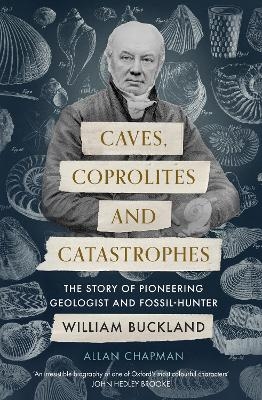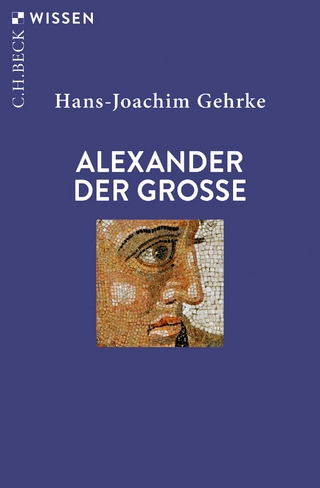
Caves, Coprolites and Catastrophes
SPCK Publishing (Verlag)
978-0-281-07951-3 (ISBN)
‘An irresistible biography of one of Oxford’s most colourful characters.’ John Hedley Brooke
In 1824, William Buckland stood in front of the Royal Geological Society and told them about the bones he had been studying – the bones of an enormous, lizard-like creature, that he called Megalosaurus.
This was the first full account of a dinosaur.
During his life, Buckland would also demonstrate changes in the earth’s climate, champion health reform, wage war on slum landlords, and become infamous for eating everything he could, even a mummified human heart. Yet his name has been largely, and unjustly, forgotten.
In this brilliantly entertaining, colourful biography – the first to be written for over a century – Allan Chapman brings William Buckland back into the light and explores his fascinating life in full. From his pioneering of geology and agricultural science to becoming Dean of Westminster, Caves, Coprolites and Catastrophes reveals a giant of intellect whose achievements helped revolutionise the British scientific community.
Carefully balancing Buckland’s more eccentric escapades with his scientific prowess and the clash between science and religion in the 19th Century, Caves, Coprolites and Catastrophes is vivid, informative and thoroughly compelling.
A captivating story packed full of compelling insights into the world of Victorian science and its relationship with the Christian faith, Caves, Coprolites and Catastrophes is an unmissable biography of an exceptional scientist whose legacy extends down to this day.
Dr Allan Chapman is a historian of science at Oxford University, with special interests in the history of astronomy and of medicine and the relationship between science and Christianity. As well as University teaching, he lectures widely, has written a dozen books and numerous academic articles, and written and presented two TV series, Gods in the Sky and Great Scientists, besides taking part in many other history of science TVdocumentaries and in The Sky at Night with Sir Patrick Moore. He has received honorary doctorates and awards from the Universities of Central Lancashire, Salford, and Lancaster, and in 2015 was presented with the Jackson-Gwilt Medal by the Royal Astronomical Society. Among his books are Slaying the Dragons. Destroying Myths in the History of Science and Faith (Lion Hudson, 2013), Stargazers: Copernicus, Galileo, the Telescope,and the Church. The Astronomical Renaissance, 1500-1700 (Lion, 2014), and Physicians, Plagues, and Progress. The History of Western Medicine from Antiquity to Antibiotics (Lion, 2016). He is also the author of thescientific biographies England's Leonardo. Robert Hooke and the Seventeenth-Century Scientific Revolution (Institute of Physics, 2005), Mary Somerville and the World of Science (Canopus, 2004; Springer, 2015), and The Victorian Amateur Astronomer. Independent Astronomical Research in Britain, 1820-1920 (Wiley-Praxis, 1998; revised edn. Gracewing, 2017).
List of illustrations xiii
Preface xv
Acknowledgements xxi
1 The British parson-scientist: William Buckland in context
Father and son geologists 1
British Natural Theology 4
Providence, progress and joy 7
The clerical scientist and society 10
Ordained astronomers 10
The clerical chemists 13
Purges from the parson: the medical clergyman 14
The ordained ‘mad doctor’ or psychiatrist 16
William Buckland: from Winchester schoolboy to Oxford undergraduate 19
2 A geologist at Oxford 21
William Buckland the Oxford undergraduate 22
Science in Buckland’s Oxford 23
Undergraduate life, work and leisure 24
Passing the examination 25
The Fellow of Corpus Christi 27
Chemistry and mineralogy in Buckland’s Oxford 29
Buckland the geological inspiration 30
3 Rocks and ages 34
Dating the creation to 23 October 4004 bc 34
‘A thousand years in thy sight are but as yesterday’ (Psalm 90.4) 35
Geology, not literary chronology 37
Dr Robert Hooke: earthquakes, fossils and continents 38
Dr Edmond Halley and cometary ‘shocks’ shaping the earth 40
Great balls of fire: Comte de Buffon and the cooling earth 41
From Freiburg to Edinburgh and the ‘new’ mineralogy of James
Hutton and Abraham Werner 42
Dr James Hutton 43
Professor Abraham Gottlob Werner 45
The Oxford School of geology 46
4 Geology vindicated and Noah’s Flood comes to Yorkshire 49
Vindiciae Geologicae: geology defended and vindicated, 1819 50
Hyenas in Yorkshire and the ‘Relics of the Deluge’ 54
‘Billy’ the celebrity hyena 58
Other caverns 59
The Red Lady of Paviland 60
The beginning of human prehistory: the Torbay caves 61
Buckland, the hyena skull and the alarmed undergraduate: a glimpse of Buckland’s lecturing style 62
5 Geologists in the landscape 64
Dr William Smith 65
Eminent gentlemen of science from ‘humble’ origins 67
George Bellas Greenough 69
Baron Georges Cuvier 70
Cuvier’s law of correlation 71
Cuvier’s catastrophes 73
Controversy about the rocks 75
The great Devonian Controversy 76
Professor John Phillips FRS 78
6 The geological Canon of Christ Church and Miss Mary Morland 81
Miss Mary Morland, fossil anatomist and artist 81
The long geological honeymoon 85
The tragedy of the death of children 88
A commitment to serving the poor 91
Rats, squirrels, toasted mice and tiger steaks for all 93
The Buckland children 94
7 ‘Gentlemen, Free and Unconfin’d’: paying for geological and other scientific research in Buckland’s Britain 96
The British learned society 97
The Geological Society, 1807,
and an enterprising apothecary’s apprentice 100
Politics, finance and science 101
The British Association for the Advancement of Science 104
The ladies at the British Association 106
The Geological Survey 109
8 Buckland’s Bridgewater Treatise and Natural Theology 111
The structure, content and argument of Geology and Mineralogy 112
Geology and Mineralogy: a treasure house of fossil wonders 116
Artesian wells and their geology 117
Flying dragons, adaptive eyes and footprints in the sand 118
Buckland’s Natural Theology 120
9 A passion for minerals and mountains: geology and the Romantic Movement 124
Minerals, gases and steam engines in the Romantic landscape 124
A Romantic summer excursion through late Georgian Britain 127
Geology: a polite and popular pursuit 131
The Revd Professor Adam Sedgwick: an accidental geologist? 132
Hugh Miller: stonemason, evangelist, author and geologist 135
Mary Anning: first lady of the fossils 137
‘Ice Ages’ transform Buckland’s geological thinking 140
Romantic glory for all 142
10 A gift for friendship: Buckland’s character, friends and influences 144
The Very Revd William Daniel Conybeare: geologist and Dean of Llandaff 144
Friends in high places, riots and rural unrest 147
The eruption of the volcano Mt Tambora in 1815 150
Coprolites: a key to ancient diets and physiology 151
Coprolites, chemistry and new fertilizers 152
Peat bogs and land drainage 154
William Buckland, Sir Robert Peel and the scientific house party 156
Cartoons, comic poems, laughter and good fellowship 157
‘Buffoonery by an Oxford Don’ 158
‘Mourn, Ammonites, mourn’ 159
11 The scriptural geologists 161
Twentieth-century fundamentalism and nineteenth-century scriptural geology 161
Scriptural geology and ‘orthodox’ geology 162
The ‘Oxford Movement’: Oxford becomes an ecclesiastical battleground 165
What was a ‘professional geologist’ in 1830? 167
Who were the scriptural geologists
and what was their concern? 168
The scripturalist sunset 175
12 Stability, progress or evolution? 176
Sir Charles Lyell: the transformative power of small changes over time 177
Volcanoes, vulcanism and their causes 181
Evolutionary thinking before Charles Darwin 183
Jean-Baptiste Lamarck 184
Vestiges of the Natural History of Creation: a Victorian literary time bomb 187
Vestiges and its message 188
Fury breaks loose against Vestiges 189
13 The Dean of Westminster 193
The Westminster Deanery 195
Tiglath-Pileser the bear goes to church 197
Renovating the fabric and reforming the School 198
‘Wash and Be Clean’: the sermon that let all hell loose 202
William Buckland, Rector of Islip 208
14 Decline, death and historical legacy 211
William Buckland’s geological achievement 213
The antiquity of the human race 215
Prehistoric finds galore 219
Early studies in the geology of the moon 221
From geology to geophysics 223
William Buckland: the final years 225
Postscript 228
Appendix: ‘Elegy intended for Professor Buckland’ (1 December 1820) by Richard Whately 229
Notes 231
Bibliography 239
Index 247
| Erscheinungsdatum | 08.03.2022 |
|---|---|
| Verlagsort | London |
| Sprache | englisch |
| Maße | 156 x 234 mm |
| Themenwelt | Literatur ► Biografien / Erfahrungsberichte |
| Sachbuch/Ratgeber ► Geschichte / Politik | |
| Sachbuch/Ratgeber ► Natur / Technik | |
| ISBN-10 | 0-281-07951-X / 028107951X |
| ISBN-13 | 978-0-281-07951-3 / 9780281079513 |
| Zustand | Neuware |
| Haben Sie eine Frage zum Produkt? |
aus dem Bereich


